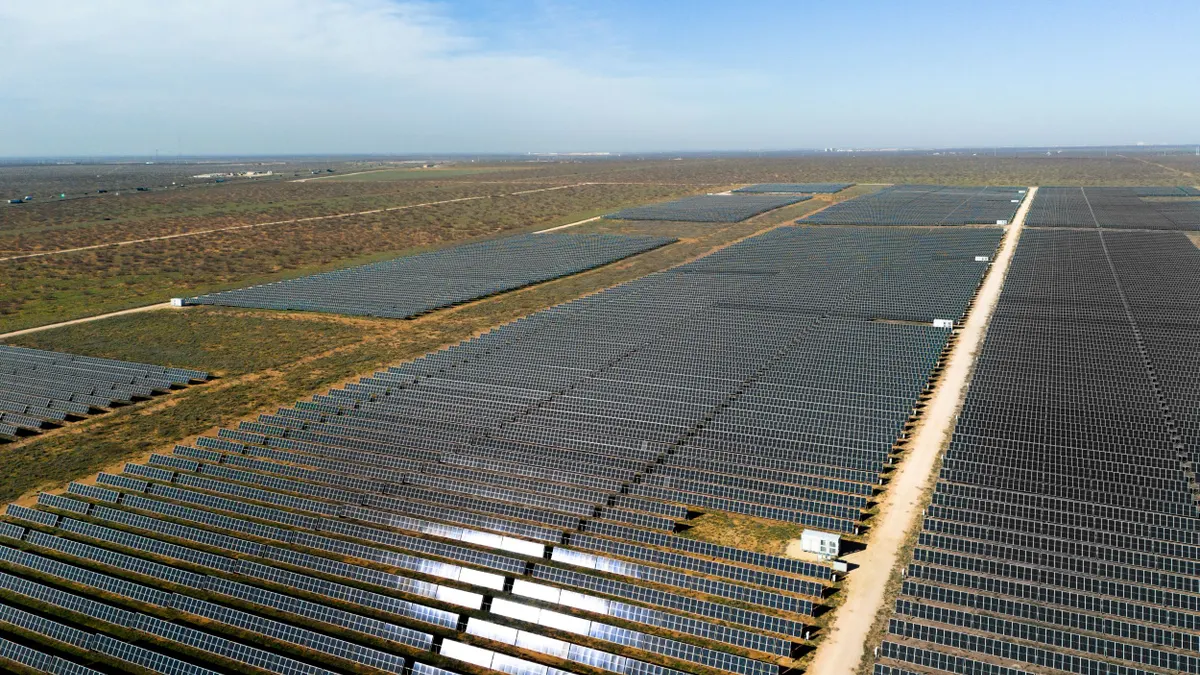The storage floodgates are opening, but they are not opening quickly.
A review of compliance filings submitted by grid operators in response to the Federal Energy Regulatory Commission's Order 841 shows that Independent System Operators (ISOs) and Regional Transmission Organizations (RTOs) are complying with FERC's directive, but work remains to be done.
When FERC issued Order 841 in February, it was hailed as a landmark decision that would open the floodgates for energy storage. That's still expected to happen, albeit slowly.
Order 841 directs ISOs and RTOs to come up with rules to open up their wholesale energy, capacity and ancillary services markets to energy storage resources on a nondiscriminatory basis. Grid operators had to submit their compliance filings by Dec. 3.
"841 is the start, not the end," Mike Berlinski, director of emerging technologies at Customized Energy Solutions, told Utility Dive. "A lot more work needs to be done to further explore and understand the market interactions."
Berlinski expects a large amount of energy storage capacity to come online as a direct result of the new rules. The number of projects being proposed is already "an order of magnitude" more than in the past because FERC initiated and is going through this process, he said.
The timeline for that process is another question. In their filings, grid operators requested approval dates from FERC so that they could meet the commission's Dec. 3, 2019, deadline to implement the rule changes. Stakeholders have until Dec. 24 to comment on the filings.
"I anticipate each filing will garner a lot of industry input, which could further delay implementation."

Caileen Gamache
Senior counsel, Norton Rose Fulbright
On track
Most grid operators said they are on track to meet the FERC deadline, but the New York ISO has already requested an implementation extension to "no earlier than May 1, 2020."
The Midcontinent ISO indicated it would adhere to the Dec. 3, 2019, deadline, but that only means energy storage resources will thereafter be eligible to register under the new "Energy Storage Resource" designation in the next quarterly update of MISO's commercial model, which will not take effect until March 1, 2020.
The PJM Interconnection, in a two-part compliance filing, requested an early effective date of Feb. 3, 2019, for the accounting changes it says are a prerequisite to full implementation of its proposed rule changes so it can work through any issues in advance of the Dec. 3, 2019, deadline.
The requested changes speak to "the big question: When will we actually see change?" Caileen Gamache, senior counsel with Norton Rose Fulbright, told Utility Dive. She noted that "interventions are already rolling in, and I anticipate each filing will garner a lot of industry input, which could further delay implementation."
Industry comment is an important part of the process, but "it may mean that there is still a long stretch of continued uncertainty for storage developers," Gamache said.
In the meantime, developers and other stakeholders have hundreds of pages of regulatory filings to pore over. In an initial assessment of the compliance filings put together by Customized Energy Solutions (CES) for the Energy Storage Association, CES created a scorecard that shows how well each ISO or RTO has complied with FERC's order.
Initial assessment of RTO/ISO compliance
"Most ISOs are leaving some required pieces out," Berlinski said during a webinar at which CES presented its assessment. That is particularly true in the overarching "participation model" category. In that category, CES gave all grid operators except California a score of "not sure."
California received a score of "in compliance" in all categories and, in fact, had few changes to make to be in compliance. CES highlighted that its scorecard is an initial assessment whose main purpose is to flag issues for energy storage stakeholders. Among those items, ISO-New England was flagged as "not in compliance" on two criteria.
ISO-NE's proposed changes call for the automatic derating of energy storage resources every five minutes in order to make sure the resources have a sufficient state of charge to meet the ISO's obligations. For storage owners, though, that removes a degree of control over their ability to bid into the market economically.
ISO-NE's proposed changes also potentially limit the flexibility of energy storage by requiring them to register as generation resources, the only ISO to suggest that.
PJM, like California, avoids the characterization issue, by viewing storage's charging and discharging modes as either negative or positive bids, which helps level the playing field between resource types. PJM does raise issues from a storage owner's point of view with its requirement that energy resources must be capable of providing 10 hours of continuous energy in order to bid into its capacity market. That is far longer than New England's two-hour requirement and New York's four-hour requirement.
"My understanding is that the industry intends to fight [PJM's 10-hour requirement]."

Chad Dixon
Consultant for emerging technologies, CES
Otherwise, PJM was already largely in compliance with FERC's order, Chad Dixon, consultant for emerging technologies at CES, said during the webinar. The 10-hour requirement was "an unfortunate development," Dixon added. "My understanding is that the industry intends to fight it."
Multiple issues in New York
In New York, the ISO created a new designation for energy storage resources, but its proposal still has multiple issues and areas that are potentially out of compliance, according to CES' assessment.
One of the issues is that NYISO's model does not work for non-continuous resources, that is, resources that cannot seamlessly transition from grid injection to withdrawal, such as pumped hydro storage. NYISO also requires that the grid operator manages a battery's state of charge in the day-ahead market, which limits the flexibility of storage resources.
In its 841 filing, NYISO lists a minimum duration of four hours for energy storage resources, but the ISO is considering extending that to as long as eight hours.
Most perplexing, perhaps, is that NYISO-proposed energy storage tariffs only apply to wholesale resources. Behind-the-meter storage resources must be sub-metered and dual participation in wholesale and utility programs is not allowed — at least until the ISO sets the rules in a separate NYISO proceeding. That could take two or three years, Patrick Shoop, manager of emerging technologies with CES, said at the webinar.
The limitations in NYISO's 841 filing could present a problem as New York rolls out the energy storage target outlined in the state's Energy Storage Roadmap. The state's Public Service Commission could release its order implementing the storage target, which is likely to be 1,500 MW by 2025, later this month.
One of the key elements in the Energy Storage Roadmap is creating the potential for energy storage to draw revenues from both the retail market, as well as the wholesale power market. But based on NYISO's 841 filing, this is still "an area of conflict," Shoop told Utility Dive.
"I expect the ISO is going to be a source of revenue" for energy storage projects, but the ISO is going to have to work out the details of the rules, which is not likely to happen until at least next year when "the DER work concludes at FERC," Shoop said.
The New York State Energy Research and Development Authority (NYSERDA) "disagrees with several of the positions in the NYISO 841-compliance filing, which do not support the goals of New York’s use of distributed energy resources and its storage targets," a spokesman wrote Utility Dive.
"We do not believe that the NYISO’s 841 filing to FERC is compliant with the requirements outlined in the filing, specifically regarding addressing barriers to energy storage participation including dual market participation (retail and wholesale)," the spokesman said. NYSERDA submitted a formal response to NYISO and will submit comments to FERC soon.
Separate DER proceeding
When FERC issued Order 841 in February, it split off issues involving aggregation of Distributed Energy Resources into a separate proceeding.
One of the reasons FERC's release of Order 841 was cheered by energy storage advocates is that it opened the possibility of creating multiple revenue streams for energy storage projects. Developers are eager to be able to tap wholesale market revenues for behind-the-meter and distribution connected storage projects. The interface between those two spheres remains problematic, however, and FERC, which only has jurisdiction in wholesale power markets, has limited ability to bridge that gap.
The issues that arise in the gap between wholesale and distribution resources are complicated, which is why FERC split it off into a separate proceeding.
Meanwhile, the 841 process is well under way and "is a big step forward toward leveling the playing field for energy storage," Berlinski said.





















